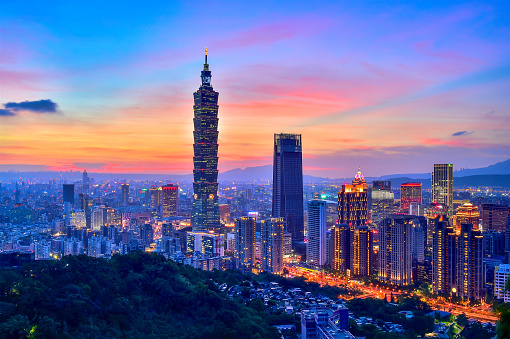Taiwan was dubbed “Ilha Formosa” during the Renaissance by Portuguese sailors passing the scantly populated island en route to Japan. In the centuries since the island and its people have been shaped by various cultural influences.
In the process, its capital, Taipei, became the eclectic, modern, and progressive metropolis it is at present. Its key attractions are each a patch in the tapestry of blended cultures and eras that encompass Taiwan.
Shi Lin Night Market
Wet markets, where a variety of live animals for culinary and medicinal purposes, traditional cures, and street food can be purchased from vendors, are a common feature throughout Asia.
Taiwan’s night markets grew out of this tradition, adopting their late hours to accommodate the working hours of the populace. The Shi Lin Night Market is beloved by Taipei residents and well known by tourists for its selection of Taiwanese street food. Favorites include stinky tofu and oyster omelets.
Daan Forest Park
Taipei is known for its modernity, and towering skyscrapers like the record-setting structure Taipei 101, once considered the tallest building in the world. However, it also boasts green spaces like Daan Forest Park. The green space at the heart of the city is known as the lungs of Taipei.
While the park serves as a serene and pastoral respite from the pulse of the city, its existence has not been without controversy. Disagreements about what should inhabit the space that became Daan Forest Park have now quieted, and the space is known for its tranquility, outdoor concerts, and towering statue of Quan Yin, the Buddhist goddess of mercy.
Ximending
With the Treaty of Shimonoseki in 1895, the First Sino-Japanese War came to an end, and the Qing dynasty of China ceded control of Taiwan, then known as Formosa, to the Japanese Empire. Japanese rule of Taiwan didn’t end until 1945, after the close of WWII. During Japanese rule in Taiwan, Japanese culture had a strong influence on language, education, and architecture on the island.
While that influence has receded, it remains strong and vibrant in Ximending. Known as the Taiwanese equivalent to the Tokyo fashion district Harajuku, Ximending is also known for street fashion, hot trends, trendy restaurants and nightspots, and the bold trendsetters who populate the neighborhood. Taiwan legalized marriage equality in 2019, and Ximending is also a hub of Taiwan’s LGBTQIAA community.
National Palace Museum
While fast-paced and fashionable Ximending is a link to Taiwan’s cultural connection to Japan, the prestigious National Palace Museum is a deep dive into its deep ties to Chinese history and culture. The vast collection of artifacts was once the private possessions of China’s imperial family, secluded behind palace walls in Beijing’s Forbidden City.
After the fall of the Qing dynasty in 1912, the artifacts that had once belonged to the last emperor and his forebears, like China itself, were caught in the struggle between vying powers during China’s civil war. Several artifacts-ancient potteries, calligraphy, silkscreens, etc.-found their way to Taiwan, and the palatial National Palace Museum was built to house the sprawling collection and opened in 1965.
Beitou
Beitou is a district in northern Taipei that, like Daan Forest Park, nurtures a pastoral atmosphere within the city limits. The district is known for its onsen culture-bathhouses built on naturally occurring thermal waters-another link to Taiwan’s years of Japanese rule. Beitou hosts many bathhouses where residents and tourists can soak in rejuvenating thermal waters.
The various spas and resorts in the region vary in price, but a popular option amongst locals and tourists is the reasonably priced Millennium Hot Springs. There are also free foot baths. The Beitou Museum, and Beitou Hot Spring Museum, respectively offer visitors a further education in the region’s links to Japanese culture, and the onsen tradition in Taiwan.
In Conclusion
Taipei’s attractions link the modern era with history, Chinese cultural influences with those of Japan, and the thriving city with the respite of the natural world.
More From LWOS Life
Make sure to stay tuned to LWOS Life for more on this and other stories from around the world of entertainment, culture and more, as they develop. You can always count on LWOS Life to be on top of the major news in the world of entertainment; whilst also providing you with editorials on everything from beer to movie reviews.

